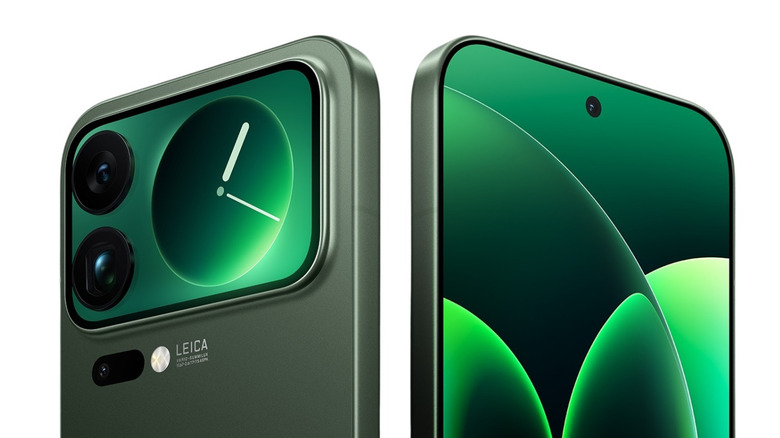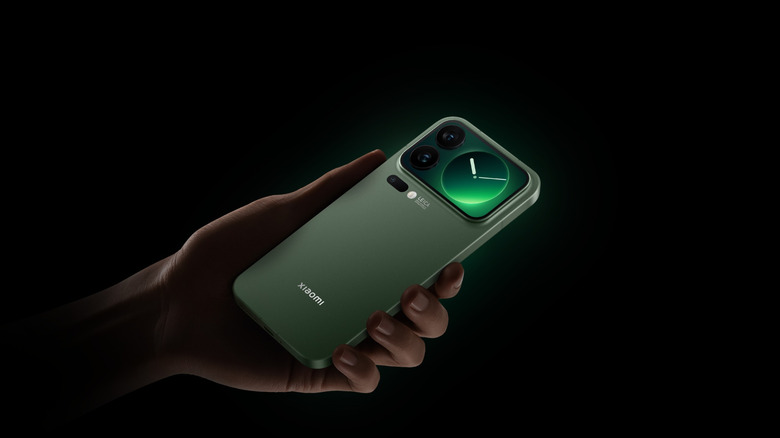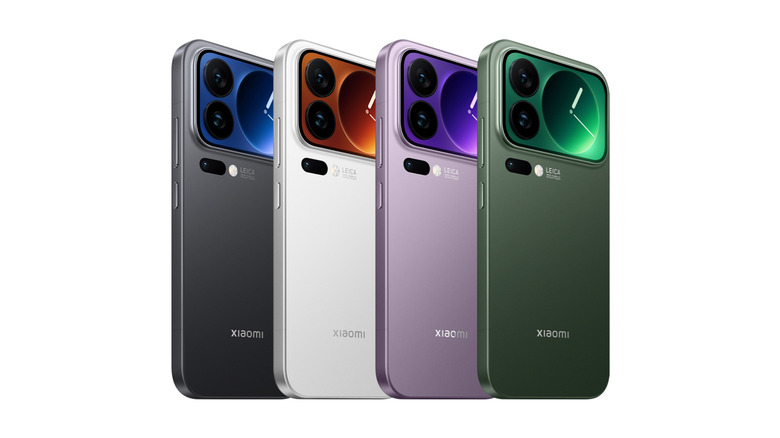This Cheap Android Phone Looks Near-Identical To The Latest iPhone, But We're Still Not Falling For It
Chinese smartphone brands like Xiaomi, Oppo, and Vivo have been in the business for over a decade. Today, they are among the world's top five smartphone brands, just behind Samsung and Apple. While popular in Asia, however, these brands have never found a stable footing in the U.S. market. Xiaomi phones are not sold in the U.S., with some arguing that these brands just make cheap iPhone knockoffs.
Now, there is some merit to the claim, given how many of these brands' products mimic several design aspects of the iPhone and even use similar-looking software and UI elements. Yet while some may have the impression that these devices look and feel like the iPhone but could never match the original in terms of capability, Chinese smartphone brands have leveled up in terms of their engineering and software abilities over the past decade. All of these brands can — and have — made smartphones that can rival the best Apple and Samsung phones. Many do, however, look a whole lot like the iPhone.
Take, for example, Xiaomi's flagship smartphone for 2025-26: the Xiaomi 17 Pro Max. Despite being quite a capable phone in itself, the Apple inspiration is unmissable. Right from the design and naming scheme down to the company's decision to announce these phones on September 9, 2025 — the same day as the iPhone 17 series was announced globally — there is no mistaking the Apple influence. Is the Xiaomi 17 Pro Max really a cheap iPhone knock-off, as the title of this article suggests? Let's investigate.
Xiaomi 17 Pro Max vs. iPhone 17 Pro Max: Is the Xiaomi really an exact copy?
The Xiaomi 17 Pro Max is the most feature-loaded (and expensive) member of the Xiaomi 17 family. The other members of this group include the base Xiaomi 17 and the mid-tier Xiaomi 17 Pro. The names, clearly, are inspired by Apple. With the Xiaomi 17 Pro Max, specifically, there is also no denying that the overall dimensions and silhouette of the device are quite similar to that of the iPhone 17 Pro Max. The handful of physical similarities include the curved edges and the identical screen size of 6.9 inches.
It is when you see the phone from the back that the differences become clear, though. To begin with, Xiaomi has decided against mimicking the iPhone's familiar triangular rear lens arrangement. Instead, it now uses vertically stacked lenses, with one of them located outside of the "box" containing the camera array. At the front, Xiaomi uses a hole-punch camera setup but misses out on the large, cylindrical cut-out that is seen on the iPhone.
While both devices get similarly sized displays, it's the Xiaomi that is the brighter of the two, with its peak brightness claimed at 3,500 nits compared to the iPhone 17 Pro Max's 3,000 nits. The Xiaomi 17 Pro Max is not a light phone, weighing in at a cool 219 grams, but it is still lighter than the 233-gram iPhone. Remarkably, despite the lower weight, it's the Chinese phone that packs in a much larger (7,500 mAh) battery inside, compared to the iPhone's 5,088 mAh capacity. Also, with support for 100W wired and 50W wired charging, it charges much faster than the iPhone, which tops out at just 40W.
Move over Cosmic Orange, a rear display is way cooler
Arguably, the coolest feature on the Xiaomi 17 Pro Max is the small 2.9-inch secondary rear-facing display that flanks the phone's backside camera array. This tiny display has the same refresh rate and brightness levels as the phone's primary display, making it incredibly fluid and bright. While the feature itself might come across as gimmicky, there are some practical use cases for it. For example, using this display as a viewfinder, one can easily capture selfies using the rear cameras.
As for the camera specs, the Xiaomi 17 Pro Max uses a triple camera setup consisting of three rear-facing 50MP sensors for wide, telephoto, and ultra-wide photos. The front-facing camera also uses a 50MP sensor. This potent hardware is mated to the Qualcomm Snapdragon 8 Elite Gen 5, the newest flagship SoC for Android smartphones. This chipset is one of the best available for Android smartphones and competes against Apple's A19 Pro chipset used on the iPhone 17 Pro Max.
Despite being Xiaomi's flagship smartphone, even the top variant of the device is priced under the $1,000 mark. In China, the base 512GB + 12GB variant of the Xiaomi 17 Pro Max starts at 5,999 Yuan ($840), while the 512GB + 16GB option is priced at 6,299 Yuan ($885). The top end 1TB + 16GB variant of the phone will set buyers back by 6,999 Yuan ($983). In comparison, the pricing of the iPhone 17 Pro Max starts at $1,199 (256GB), going up to an astronomical $1,999 for the 1TB option.


